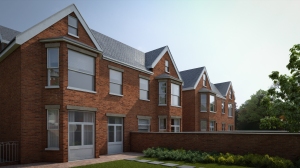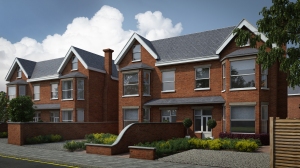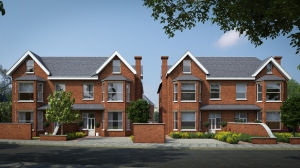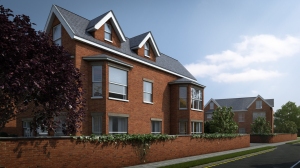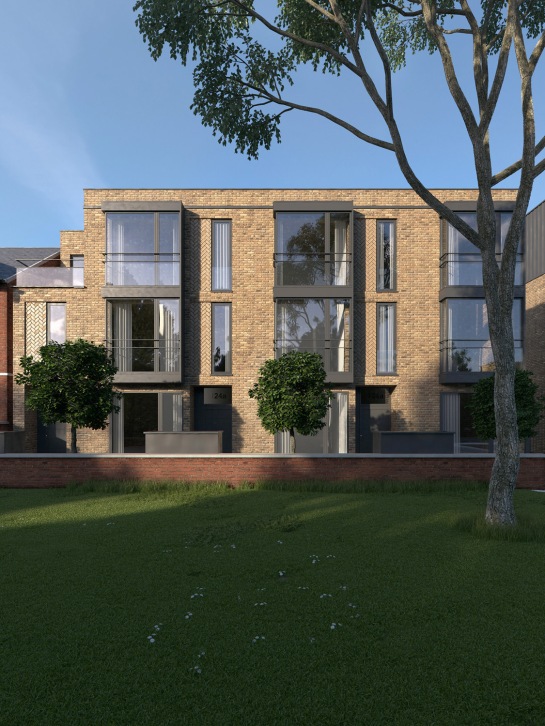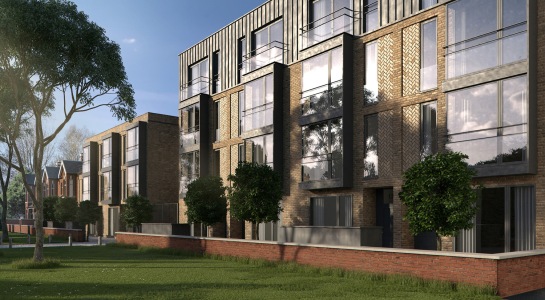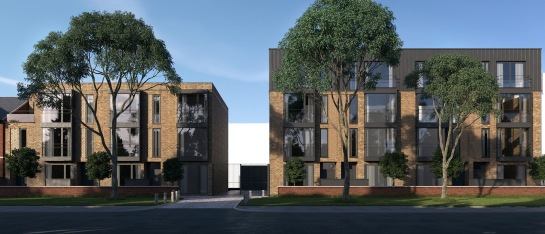Betty’s Tea-Room chalk render and still image breakdown… for fun.
Betty’s Tea Room
Lighting in Vray using an HDRI Sky only
This tutorial covers lighting in Vray using an HDRI Sky only. The following steps will be shown: Creation of the Vray dome light and loading the HDR/EXR image file, reducing the HDRI gamma to introduce sharp defined shadows, overriding the environment background and reflection with a second unmodified HDRI, and finally generating a render with an alpha channel for use in post production.
Please note that the scene is lit with one of Peter Guthrie’s HDR images. The settings I have used in the tutorial suit his HDRIs well but the results may vary a little with other HDRIs. Don’t be afraid to adjust the setting and experiment! The principles shown in this tutorial are applicable should be perfectly suited to a variety of HDR imagery.
Gamma/LUT settings for your info: http://postimage.org/image/sssolbt75/
The above images were produced for a private developer client & friend of mine. The building site is not far from Clapham Junction (not far from where I currently work and in a part of London that I know reasonably well: I’m going to have to stop doing everything in 3D and start taking more photographs for these projects at some point I think!) I really enjoyed the fast turn around on this job. In addition it represented a culmination of a lot of learning on previous jobs. The job is ongoing as there are several phases to the actual building project. More images will follow from the project in time. I generated these images with all the typical tools: 3DS Max 2011, Vray, Photoshop and possibly one of my more valuable tools: Google Street View!
M
Scary Monsters & Nice Sprites
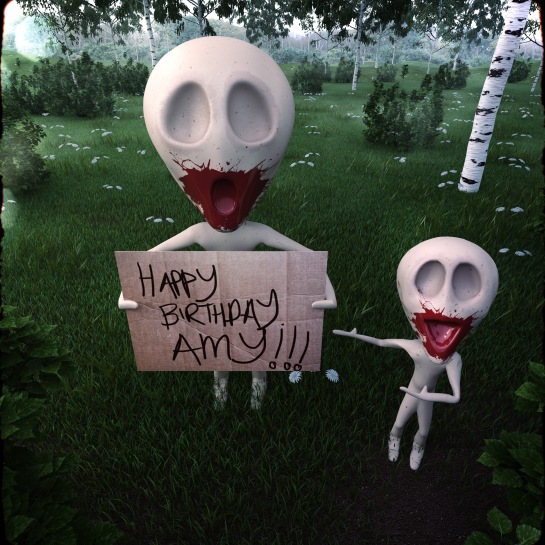
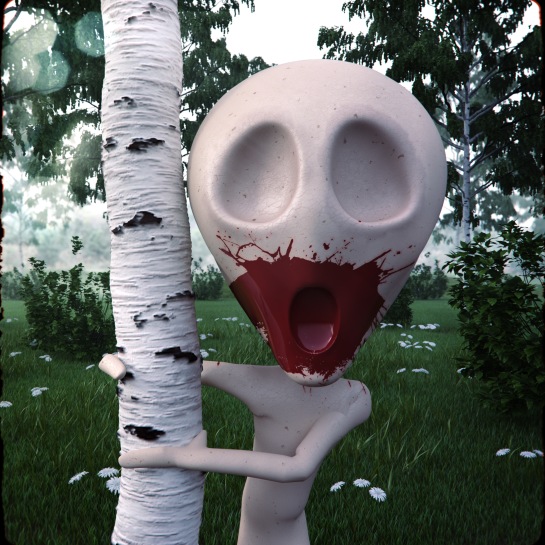
The above images represent my not so recent foray into zbrush, character rigging as well as some extensive Onyx Tree and trusted Peter Guthrie grass tutorials. The purpose of these images (apart from the obvious learning benefit to myself) was to produce a humorous yet slightly disturbing birthday card for a close friend. I’m pleased to say she was suitably amused and disturbed. All in all I used 3DSMax, vray, Onyx Tree, Zbrush, Photoshop, After Effects and Magic Bullet Photolooks (I think!) I have learned a tremendous amount about both zbrush and onyx tree and would love to produce a few tutorials soon the things I’ve found useful.
The image below is a screen grab of me trying to get my head around painting the influence weights of bones on a character mesh… I’d recommend modelling it correctly first!

Still Image Post-production Breakdowns
For a while I have wanted to put together a short film that briefly looks at the very enjoyable, but occasionally stressful process that is post production of still CG images: a process of working up a raw render to the point where it can reasonably be considered a complete, final image. Compared to working in 3d, it feels like a far more tactile aspect of still architectural CG: equally as enjoyable but for completely different reasons.
Having worked in both environments I am now strongly against the split skills production line approach to architectural visualisation. I believe to be a good CG artist you need to attempt to master all the skills required to complete a job, not merely one specialism.
I really enjoyed putting this video together. Learned a couple little new things about premiere and what a cracking piece of software it is. I can’t wait for the next time I need to do some video editing!
All of the work shown in the video is studio-based work I have done over the last eight months to a year.
Silver Birch…
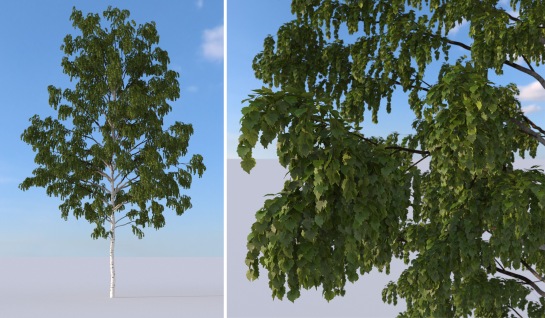 I have developed a slightly unhealthy obsession with creating natural vegetation in CG. The silver birch tree in the image above is one of the first that I have created that I’m reasonably content with. It was created using onyxtree, which if you don’t know (this seems unlikely if you are reading this blog at all!) is an incredibly retro/disco piece of software, which is initially frustrating but later fairly fun to use. It’s great for quickly generating bespoke trees and shrubs for a massive variety of species of plant. It doesn’t offer quite the control I would like so I am desperate to try out GrowFX. Before I throw myself into that I might actually do a tutorial to cover generating a half decent tree in Onyx, importing and texturing in max. An interesting feature about this tree is that the leaves are textured by placing a vray2sided material inside a vrayblend material (set up with no base material.) Having tested this, I can confirm that it is significantly more economic at render time than the traditional method of using opacity mapped leaves.
I have developed a slightly unhealthy obsession with creating natural vegetation in CG. The silver birch tree in the image above is one of the first that I have created that I’m reasonably content with. It was created using onyxtree, which if you don’t know (this seems unlikely if you are reading this blog at all!) is an incredibly retro/disco piece of software, which is initially frustrating but later fairly fun to use. It’s great for quickly generating bespoke trees and shrubs for a massive variety of species of plant. It doesn’t offer quite the control I would like so I am desperate to try out GrowFX. Before I throw myself into that I might actually do a tutorial to cover generating a half decent tree in Onyx, importing and texturing in max. An interesting feature about this tree is that the leaves are textured by placing a vray2sided material inside a vrayblend material (set up with no base material.) Having tested this, I can confirm that it is significantly more economic at render time than the traditional method of using opacity mapped leaves.
Lighting in Vray using an HDRI Sky & VraySun
This tutorial covers updated techniques for lighting in Vray using an HDRI Sky and Vray Sun.
Please note that I have learned much of what is presented in this tutorial by going though Peter Guthrie’s blog in detail. In addition there are some other steps which I have worked out while experimenting with the technique. I felt it would be useful to try to consolidate what I have learned into one concise video. In addition, please note that the scene is lit with one of Guthrie’s HDR images which he sells online. The settings I have used in the tutorial suit his HDRIs well but the results may vary a little with other HDRIs. Don’t be afraid to adjust the setting and experiment! It would be nice to hear what kind of results other people get with different HDRIs. I would encourage you to check out Peter Guthrie’s blog, for a lot of detail on this topic (as well as many other areas of architectural visualisation.) The webpages of Ronen Bekerman and Bertrand Benoit also provide some very useful information on the topic of lighting with HDRI.
The following steps will be shown: Creation of the vray dome light, loading the HDR/EXR image file, creation and aligning of the vray sun to the HDRI, linking of the vray sun to the dome light, the parameter wiring of the dome light to control the rotation of the HDRI and finally generating a render with an alpha channel for use in post production.
Please check out my vimeo page (vimeo.com/minusthematt/videos) and my this blog for additional tutorials, my work and occasionally some free stuff in the future.
